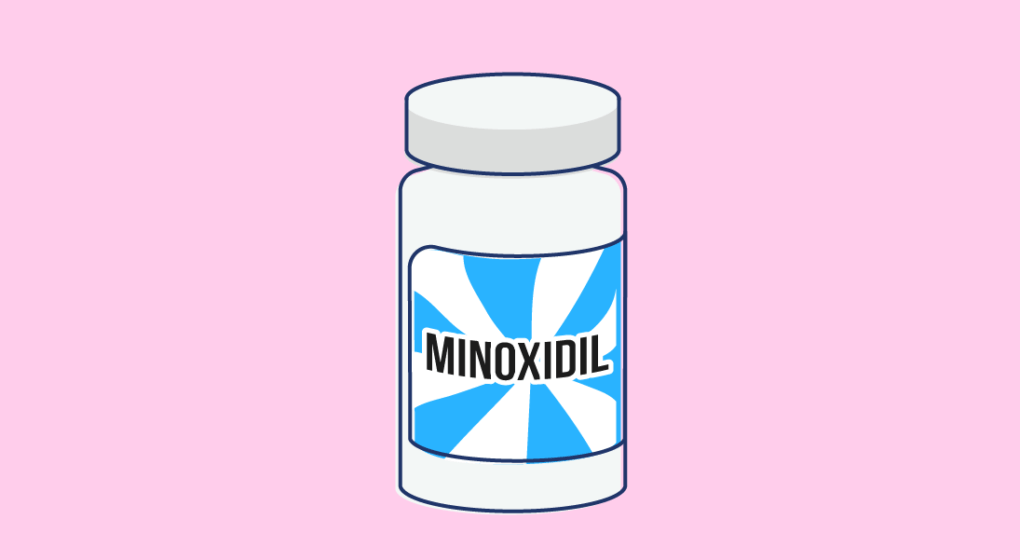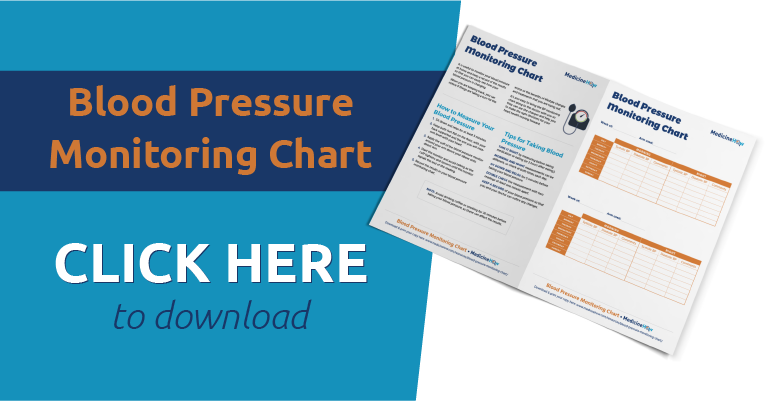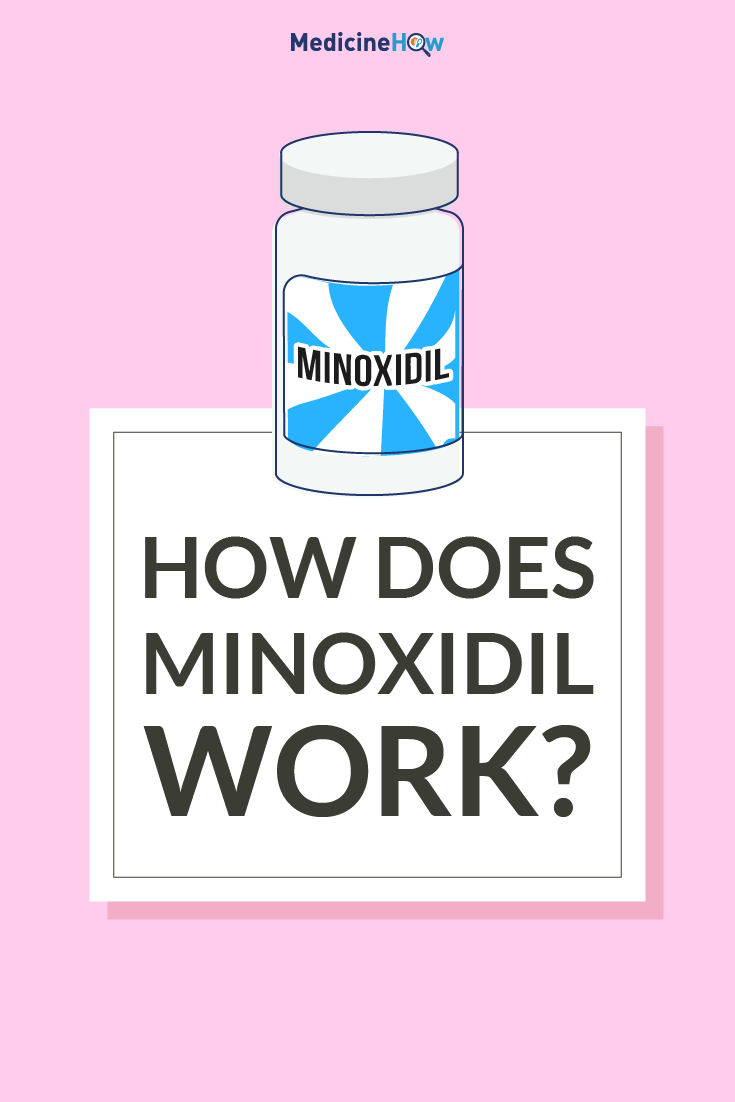
Minoxidil is a drug that can be used to manage either high blood pressure (in tablet form) or hair loss (applied topically to the scalp), and the way it works to treat these conditions is different.
For hypertension, it works on the brain and central nervous system to cause the blood vessel to relax and allow more blood to flow through, lowering the blood pressure. For hair loss or alopecia, the exact mechanism of action is not known but it may work due to changes in the hair follicles and lifecycle.
Minoxidil for Hypertension
Brand Names and Doses
![]() Minoxidil is the generic name of the drug, which is the name of the active component in the medication that has an effect on your body. You might also know it by the brand name, Loniten, which is the name given to the drug by the manufacturing company.
Minoxidil is the generic name of the drug, which is the name of the active component in the medication that has an effect on your body. You might also know it by the brand name, Loniten, which is the name given to the drug by the manufacturing company.
It is available in a single dose of 10 mg. Most people start by taking a half a tablet daily (5 mg of minoxidil) and then gradually increase the dose until the blood pressure is well controlled. This allows your body to get used to taking the drug and reduces the risk of side effects.

How does minoxidil work for hypertension?
![]() Minoxidil works its action on the brain and central nervous system, which then affect several other areas around the body. Importantly, the blood vessels (particularly the arteries, with less effect on the veins) become bigger because the muscles surrounding them are more relaxed. When the blood vessels dilate, there is more room for the blood to pass through so the blood pressure goes down.
Minoxidil works its action on the brain and central nervous system, which then affect several other areas around the body. Importantly, the blood vessels (particularly the arteries, with less effect on the veins) become bigger because the muscles surrounding them are more relaxed. When the blood vessels dilate, there is more room for the blood to pass through so the blood pressure goes down.
When the body “realises” that the blood pressure is lower than usual, it tries to correct the change and keep the body in balance by increasing the heart rate and the volume of blood. This is part of the normal way that your body can control the blood pressure.
Unfortunately, we don’t want this to happen because it means the drug won’t work as well. For this reason, most people take minoxidil with other medications, such as a beta blocker (to decrease the heart rate again) and a loop diuretic (to stop the retention of fluid).
Side Effects
![]() As the action of minoxidil is on the central nervous system, it can easily affect every other area of the body. Side effects may include:
As the action of minoxidil is on the central nervous system, it can easily affect every other area of the body. Side effects may include:
- Edema
- Increased heart rate (tachycardia)
- Pericarditis
- Changs in function of the heart (ECG changes)
- Heart palpitations
Some people may also experience adverse effects if the drug works too well and you end up with low blood pressure, called hypotension. This may make you feel dizzy, flushed or get a headache.
Precautions
![]()
There are some cases when minoxidil should be used or should only be used if really needed.
For example, if you have a history of pheochromocytoma or angina, it’s not likely to be the best choice. This is because of the way minoxidil increases the heart rate in the body, which can aggravate both of these conditions. If you doctor does decide to use minoxidil, it will probably be with another drug (e.g. a beta blocker) to keep the heart rate under control.
Additionally, if you have heart failure, minoxidil can make the condition even worse. This is because it cause retention of fluid (e.g. swelling in your ankles), which is also a common symptom of heart failure. The two together is a recipe for disaster, but if it is truly needed, a loop diuretic can help to reduce the edema.
Pregnancy and Breastfeeding
![]() Minoxidil should not be used in pregnant women because it can cause a condition called hypertrichosis in your baby.
Minoxidil should not be used in pregnant women because it can cause a condition called hypertrichosis in your baby.
It can sometimes be used by women who are breastfeeding, although there is not much research to determine how safe it is. For this reason, if you are taking it while pregnant, you should make sure to closely watch for any signs that it may be affecting your baby.

Minoxidil for Hair Loss
Brand Names and Doses
![]() Minoxidil is the active component of the medication and is available is several products with with different brand names. These include:
Minoxidil is the active component of the medication and is available is several products with with different brand names. These include:
-
- Women’s Regain Regular Strength (20 mg/mL liquid formulation)
- Men’s Regain Regular Strength (20 mg/mL liquid formulation)
- Men’s Regain Extra Strength (50 mg/mL liquid formulation)
- Hair-A-Gain (50 mg/mL liquid formulation)
- Men’s Regain Foam Extra Strength (5% w/v foam formulation)
Each of these products should be applied twice each day to the affected area. Each dose should be 1 mL of the liquid formulation or 1/2 a capful of the foam product (read the instruction manual for complete advice).
How does minoxidil work for hair loss?
![]() It is not currently known how minoxidil works to treat hair loss as promote hair growth. The effect doesn’t seem to be related to dilation of the blood vessels like the way it works for hypertension, as the topical application doesn’t have an effect on this.
It is not currently known how minoxidil works to treat hair loss as promote hair growth. The effect doesn’t seem to be related to dilation of the blood vessels like the way it works for hypertension, as the topical application doesn’t have an effect on this.
Instead, it may work by increasing the duration of the hair growth section of the hair life cycle, or it may enlarge shrunken hair follicles. Both of these suggestions are not proven but may explain the effect of the drug.
Side Effects
![]() As minoxidil is applied topically onto the skin for hair loss it does not have obvious systemic effects that affect the whole body. Side effects may include:
As minoxidil is applied topically onto the skin for hair loss it does not have obvious systemic effects that affect the whole body. Side effects may include:
- Itchy skin
- Dry skin
- Dermatitis
- Excessive hair growth (more common in women)
Application
![]() For hair loss, minoxidil should be applied to dry skin. It is important that you wash your hands after use and avoid the product coming into contact with your eyes.
For hair loss, minoxidil should be applied to dry skin. It is important that you wash your hands after use and avoid the product coming into contact with your eyes.
You should then allow the area to dry in open air for at least an hour, without wetting the area or wearing a hat or a wig.
Minoxidil is a long-term solution that has only been shown to have an effect for people who still have some little hair visible on the scalp. It can take up to four months for you to notice a benefit and the effect of the drug is likely to wane if you stop taking it.
Pin it!


